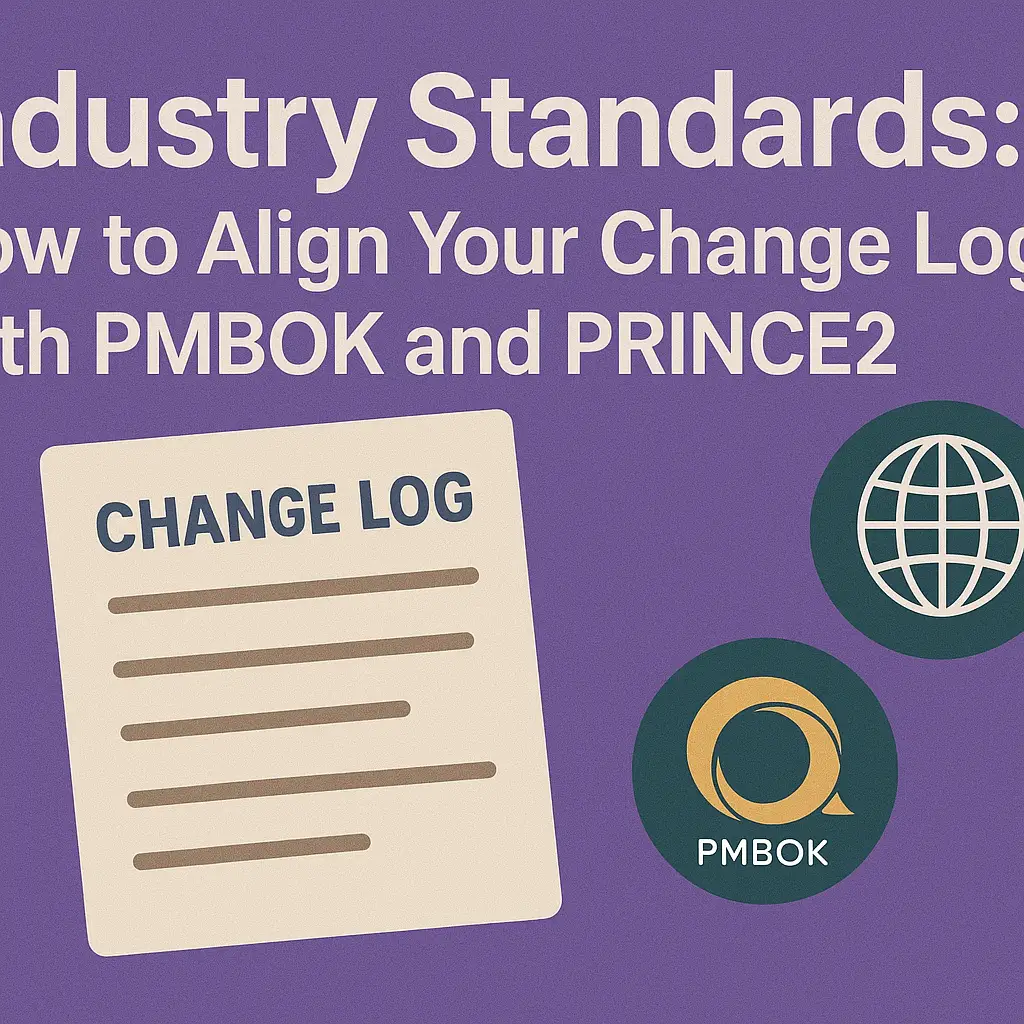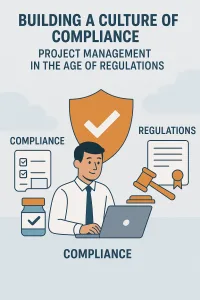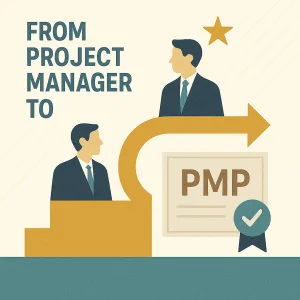Introduction to Change Logs in Project Management
A change log serves as a vital tool for tracking modifications made to a project’s plan or agreement. It is essentially a record that documents all changes, including their nature, reasons, and impacts on the project. This log is crucial for maintaining transparency and accountability among project stakeholders, ensuring that everyone is aware of the adjustments made throughout the project lifecycle. By systematically recording changes, project managers can better manage expectations and facilitate communication among team members and stakeholders.
Maintaining an effective change log is critical for several reasons:
- Clarity and Communication: A well-maintained change log provides clarity on what changes have been made, why they were necessary, and how they affect the project’s scope, timeline, and resources. This transparency helps prevent misunderstandings and miscommunications among team members and stakeholders, fostering a collaborative environment.
- Risk Management: By documenting changes, project managers can identify patterns or recurring issues that may pose risks to the project. This proactive approach allows for better risk assessment and mitigation strategies, ultimately contributing to project success.
- Compliance and Accountability: In many industries, maintaining a change log is not just a best practice but a requirement for compliance with industry standards. It serves as a record that can be referenced during audits or evaluations, ensuring that the project adheres to established guidelines and regulations.
- Performance Evaluation: A change log can also be a valuable tool for evaluating project performance. By analyzing the changes made throughout the project, managers can assess the effectiveness of their decision-making processes and identify areas for improvement in future projects.
To effectively align change logs with established project management methodologies, it is essential to understand the frameworks provided by PMBOK (Project Management Body of Knowledge) and PRINCE2 (PRojects IN Controlled Environments).
- PMBOK: This methodology emphasizes the importance of knowledge areas and process groups that guide project management practices. It provides a comprehensive framework that includes change management as a critical component, ensuring that changes are systematically evaluated and documented.
- PRINCE2: This methodology is characterized by its structured approach, focusing on principles, themes, and processes. PRINCE2 highlights the significance of change control, advocating for a clear process to manage changes effectively and maintain project alignment with its objectives.
By bridging the theoretical frameworks of PMBOK and PRINCE2 with the practical application of change logs, project management students and practitioners can enhance their understanding of how to implement effective change management practices. This foundational knowledge will not only contribute to individual project success but also foster a culture of continuous improvement within organizations.
Understanding PMBOK and PRINCE2 Frameworks
Understanding the frameworks that guide change management is crucial for both students and practitioners. Two of the most recognized frameworks are the PMBOK® Guide and PRINCE2. Each offers a unique approach to managing changes within projects, and aligning your change log with these standards can enhance project success.
Overview of the PMBOK Guide
The PMBOK® Guide, developed by the Project Management Institute (PMI), provides a comprehensive framework that outlines essential processes and knowledge areas necessary for effective project management. Key aspects include:
- Processes: The PMBOK identifies five process groups—Initiating, Planning, Executing, Monitoring and Controlling, and Closing. Change management primarily falls under the Monitoring and Controlling process group, where project managers assess and manage changes to the project scope, schedule, and costs.
- Knowledge Areas: The guide includes ten knowledge areas, such as Integration Management and Scope Management, which are critical for understanding how changes impact the overall project. Change management is particularly emphasized in the Integration Management area, where project managers must ensure that all changes are aligned with project objectives and stakeholder expectations.
- Role of Change Management: Within the PMBOK framework, change management is integral to maintaining project alignment with its goals. The framework encourages the use of a change log to document all requested changes, their impact, and the decisions made regarding them, ensuring transparency and accountability throughout the project lifecycle [1][2].
Overview of PRINCE2
PRINCE2 (PRojects IN Controlled Environments) is a structured project management method that emphasizes organization and control throughout the project lifecycle. Its approach to change management includes:
- Key Principles: PRINCE2 is built on seven principles, one of which is the focus on continued business justification. This principle ensures that any changes made during the project are justified in terms of their benefits and alignment with project objectives.
- Themes: The framework includes seven themes, with Change being a critical theme. PRINCE2 emphasizes the importance of change control, which involves assessing the impact of changes and ensuring that they are managed effectively to minimize disruption.
- Focus on Change Control: PRINCE2 advocates for a formal change control process, which includes the use of a change log to track all change requests, their evaluation, and the outcomes of those evaluations. This structured approach helps maintain project integrity and ensures that all stakeholders are informed of changes and their implications [3][4].
Comparison of Change Management Approaches
When comparing how PMBOK and PRINCE2 address change management, several key differences and similarities emerge:
- Documentation: Both frameworks emphasize the importance of documenting changes. PMBOK encourages the use of a change log as part of the Monitoring and Controlling process, while PRINCE2 mandates a formal change control process that includes a change log to track requests and decisions.
- Impact Assessment: PMBOK focuses on assessing the impact of changes within the context of project integration, while PRINCE2 places a stronger emphasis on the justification of changes in relation to project objectives and benefits.
- Stakeholder Communication: Both frameworks recognize the need for effective communication with stakeholders regarding changes. PMBOK integrates this within its processes, while PRINCE2 explicitly includes stakeholder engagement as part of its change control theme.
Understanding the PMBOK and PRINCE2 frameworks provides project management students and practitioners with valuable insights into effective change management practices. By aligning change logs with these industry standards, project managers can enhance their ability to manage changes systematically and transparently, ultimately leading to more successful project outcomes [5][6].
The Role of Change Logs in PMBOK and PRINCE2
Change logs are essential tools in project management, serving as a formal record of all changes made throughout the project lifecycle. They play a critical role in both the PMBOK (Project Management Body of Knowledge) and PRINCE2 (PRojects IN Controlled Environments) frameworks, each incorporating change logs in unique ways that align with their methodologies.
PMBOK and Change Logs
In the PMBOK framework, change logs are integrated into the overall project management processes. Specifically, they are utilized within the Monitoring and Controlling process group, which is one of the five key process groups defined by PMBOK. The change log serves several purposes:
- Tracking Changes: PMBOK emphasizes the need to document all change requests, their status, and the impact on project objectives. This systematic tracking helps ensure that all changes are evaluated and approved before implementation, thereby maintaining project integrity and alignment with initial goals [8].
- Facilitating Communication: By maintaining a change log, project managers can effectively communicate changes to stakeholders, ensuring that everyone is informed about the current status of the project and any modifications that may affect their interests [9].
- Risk Management: Change logs also play a vital role in risk management. By documenting changes, project managers can assess potential risks associated with each change and develop strategies to mitigate them, thus enhancing the project’s overall risk management process [5].
PRINCE2 and Change Control
PRINCE2 places a strong emphasis on change control and documentation, making change logs a fundamental component of its methodology. The framework outlines specific processes for managing changes, which include:
- Change Control Process: PRINCE2 defines a structured approach to change management, where change logs are used to record all change requests, their evaluation, and the decisions made regarding them. This process ensures that changes are systematically assessed for their impact on project objectives and deliverables [4].
- Documentation and Accountability: The use of change logs in PRINCE2 not only documents changes but also assigns accountability for each change request. This clarity helps in tracking who approved or rejected changes, thereby enhancing transparency and responsibility within the project team [6].
- Stakeholder Engagement: Similar to PMBOK, PRINCE2 recognizes the importance of stakeholder communication. Change logs facilitate this by providing a clear record of changes that can be shared with stakeholders, ensuring they are kept informed and engaged throughout the project lifecycle [9].
Change logs are pivotal in both PMBOK and PRINCE2 frameworks, serving as tools for tracking changes, facilitating communication, and managing risks. By understanding how each framework incorporates change logs, project management students and practitioners can better align their practices with industry standards, ultimately leading to more successful project outcomes.
Best Practices for Creating an Effective Change Log
Creating a change log is a critical aspect of project management that ensures all modifications to the project are documented, tracked, and communicated effectively. Aligning your change log with established frameworks like PMBOK and PRINCE2 can enhance its effectiveness and ensure compliance with industry standards. Here are some best practices to consider:
Essential Components of a Change Log
To create a comprehensive change log, include the following essential components:
- Change ID: Assign a unique identifier to each change for easy reference and tracking.
- Description: Provide a clear and concise description of the change, detailing what is being modified and why.
- Impact Assessment: Evaluate and document the potential impacts of the change on the project scope, schedule, budget, and resources. This assessment helps stakeholders understand the implications of the change.
- Approval Status: Record the status of the change request, including whether it has been approved, rejected, or is pending approval. This ensures transparency in the decision-making process and aligns with the approval protocols outlined in PMBOK and PRINCE2 [1][4].
Tips for Documenting Changes Effectively
Effective documentation is crucial for clarity and traceability. Here are some tips to enhance your change log documentation:
- Be Consistent: Use a standardized format for documenting changes to maintain uniformity. This makes it easier for team members to understand and navigate the log.
- Include Dates: Record the date of each change request and the date of approval. This helps in tracking the timeline of changes and their implementation.
- Involve Stakeholders: Ensure that all relevant stakeholders are involved in the change documentation process. Their input can provide valuable insights and foster a sense of ownership over the changes.
- Regular Updates: Keep the change log updated regularly to reflect the most current information. This practice helps in maintaining an accurate record and facilitates better project tracking [2][3].
Tools and Software Options for Managing Change Logs
Utilizing the right tools can streamline the management of change logs. Consider the following options:
- Project Management Software: Tools like Microsoft Project, Trello, or Asana offer features for tracking changes and maintaining logs. They allow for easy collaboration and visibility among team members.
- Version Control Systems: For projects involving software development, version control systems like Git can be used to track changes in code and document modifications effectively.
- Dedicated Change Management Tools: Software specifically designed for change management, such as ChangeGear or ServiceNow, can provide robust features for documenting, tracking, and approving changes in a structured manner [5][6].
By following these best practices, project management students and practitioners can create effective change logs that not only align with PMBOK and PRINCE2 standards but also enhance the overall management of project changes. This alignment ensures that changes are handled systematically, reducing risks and improving project outcomes.
Aligning Your Change Log with PMBOK and PRINCE2
Maintaining a comprehensive change log is essential for tracking modifications and ensuring project alignment with established standards. This section will guide you through the process of tailoring your change log to meet the requirements of both the PMBOK (Project Management Body of Knowledge) and PRINCE2 (PRojects IN Controlled Environments) frameworks, bridging theoretical frameworks with practical application.
Step-by-Step Process for Integrating PMBOK and PRINCE2 Elements into Your Change Log
- Understand the Frameworks: Familiarize yourself with the key components of PMBOK, which emphasizes knowledge areas and process groups, and PRINCE2, which focuses on principles, themes, and processes. This foundational knowledge will help you identify relevant elements to include in your change log.
- Define Change Log Structure: Create a structured format for your change log that incorporates elements from both frameworks. Essential components may include:
Change ID
Description of Change
Impact Assessment (aligned with PMBOK’s risk management)
Approval Status (reflecting PRINCE2’s emphasis on governance)
Implementation Date
Responsible Party - Integrate Change Control Processes: Implement change control processes as outlined in PMBOK, which includes identifying, documenting, and evaluating changes. PRINCE2’s focus on managing change through its change theme can also be integrated by ensuring that all changes are logged and assessed against project objectives.
- Regular Updates and Reviews: Schedule regular reviews of the change log to ensure it remains current and relevant. This practice aligns with PMBOK’s monitoring and controlling processes and PRINCE2’s principle of continued business justification.
- Training and Communication: Educate your project team on the importance of the change log and how to use it effectively. Clear communication ensures that everyone understands the alignment with PMBOK and PRINCE2 standards.
Examples Showcasing Successful Alignment
- Tech Startup Implementation:
A tech startup adopted a change log that integrated PMBOK and PRINCE2 elements during a software development project. By documenting changes in a structured format and conducting regular impact assessments, the team was able to maintain project alignment and successfully deliver the product on time. - Construction Project:
In a large construction project, the project manager utilized a change log that reflected both frameworks. By ensuring that all changes were documented and approved through a formal process, the project avoided costly delays and maintained stakeholder satisfaction.
Common Pitfalls to Avoid When Aligning Your Change Log with Industry Standards
- Neglecting Documentation:
Failing to document changes thoroughly can lead to confusion and miscommunication. Ensure that every change is recorded with sufficient detail to provide context. - Inconsistent Updates:
Infrequent updates to the change log can result in outdated information. Establish a routine for updating the log to reflect the most current project status. - Ignoring Stakeholder Input:
Not involving stakeholders in the change management process can lead to resistance and dissatisfaction. Engage stakeholders in discussions about changes to ensure their concerns are addressed. - Overcomplicating the Process:
While it’s important to align with PMBOK and PRINCE2, overcomplicating the change log can hinder its usability. Strive for a balance between thoroughness and simplicity.
By following these guidelines, project management students and practitioners can effectively align their change logs with PMBOK and PRINCE2, ensuring that they not only meet industry standards but also enhance project success through clear and organized change management practices.
Real-World Applications
Maintaining a change log is crucial for tracking modifications and ensuring that all stakeholders are informed. This section explores how organizations have successfully implemented change logs aligned with PMBOK and PRINCE2 methodologies, highlighting key lessons learned and the positive impact on project outcomes.
Examples of Organizations
- Tech Innovations Inc.
- Overview: A software development company that adopted PRINCE2 for its project management framework.
- Implementation: Tech Innovations Inc. integrated a change log that documented all changes, including scope adjustments, resource reallocations, and timeline shifts. This log was regularly reviewed during project board meetings.
- Outcome: The structured approach led to a 30% reduction in project overruns and improved stakeholder satisfaction, as everyone was kept informed of changes and their implications.
- Greenfield Construction
- Overview: A construction firm that utilized PMBOK principles to manage large-scale projects.
- Implementation: Greenfield established a change log that categorized changes by knowledge areas, such as scope, time, and cost. This log was accessible to all team members and updated in real-time.
- Outcome: The company reported a significant decrease in miscommunication and disputes, resulting in a 25% increase in project delivery speed and enhanced team collaboration.
- Healthcare Solutions Ltd.
- Overview: A healthcare provider that managed multiple projects simultaneously, focusing on compliance and quality.
- Implementation: They adopted a hybrid approach, combining PMBOK and PRINCE2 methodologies. Their change log was designed to track regulatory changes and project adjustments, ensuring compliance with healthcare standards.
- Outcome: The organization experienced improved compliance rates and a 40% reduction in project-related risks, demonstrating the effectiveness of a well-maintained change log in a highly regulated environment.
Lessons Learned and Key Takeaways
- Consistency is Key: Organizations that maintained a consistent format and regular updates for their change logs found it easier to track changes and communicate them effectively to stakeholders. This consistency fosters trust and transparency within the project team.
- Stakeholder Engagement: Engaging stakeholders in the change log process, such as through regular reviews and updates, enhances their understanding and acceptance of changes. This practice can lead to better project outcomes and stakeholder satisfaction.
- Integration with Project Management Tools: Many successful organizations integrated their change logs with project management software, allowing for real-time updates and easier access for all team members. This integration streamlined communication and reduced the likelihood of errors.
Impact of a Well-Maintained Change Log on Project Outcomes
A well-maintained change log serves as a vital tool in project management, influencing various aspects of project success:
- Enhanced Communication: By documenting changes clearly, teams can avoid misunderstandings and ensure that everyone is on the same page, which is essential for maintaining project momentum.
- Improved Risk Management: A detailed change log allows project managers to identify potential risks associated with changes and develop mitigation strategies proactively. This foresight can significantly reduce the likelihood of project failure.
- Informed Decision-Making: With a comprehensive record of changes, project managers can make informed decisions based on historical data, leading to more effective project planning and execution.
Aligning change logs with PMBOK and PRINCE2 methodologies not only enhances project management practices but also leads to tangible improvements in project outcomes.
Conclusion: The Importance of a Well-Aligned Change Log
Maintaining a well-structured change log is not merely a procedural formality; it is a critical component that can significantly influence the success of a project. Aligning your change log with established industry standards such as PMBOK (Project Management Body of Knowledge) and PRINCE2 (PRojects IN Controlled Environments) offers numerous benefits that enhance both the theoretical and practical aspects of project management.
Recap of the Benefits of an Aligned Change Log
- Enhanced Clarity and Communication: An aligned change log provides a clear record of changes, ensuring that all stakeholders are informed and on the same page. This transparency fosters better communication and reduces the likelihood of misunderstandings or conflicts during the project lifecycle.
- Improved Risk Management: By documenting changes systematically, project managers can better assess the impact of modifications on project scope, timeline, and resources. This proactive approach to change management helps in identifying potential risks early and implementing mitigation strategies effectively.
- Facilitated Compliance and Auditing: Adhering to industry standards in your change log not only aids in compliance with organizational policies but also simplifies the auditing process. A well-maintained log serves as a reliable reference for stakeholders and auditors, demonstrating accountability and governance.
- Streamlined Decision-Making: An aligned change log supports informed decision-making by providing a comprehensive overview of all changes made throughout the project. This historical context allows project managers to evaluate the rationale behind decisions and their outcomes, leading to more strategic future planning.
Final Thoughts on the Relationship Between Theory and Practical Application in Project Management
The integration of theoretical frameworks like PMBOK and PRINCE2 with practical applications in project management is essential for cultivating a robust project environment. While these frameworks provide valuable guidelines and best practices, the real challenge lies in their implementation. A well-aligned change log serves as a bridge between theory and practice, ensuring that the principles outlined in these frameworks are effectively translated into actionable steps within projects.
Find out more about Shaun Stoltz https://www.shaunstoltz.com/about/.
This post was written by an AI and reviewed/edited by a human.



